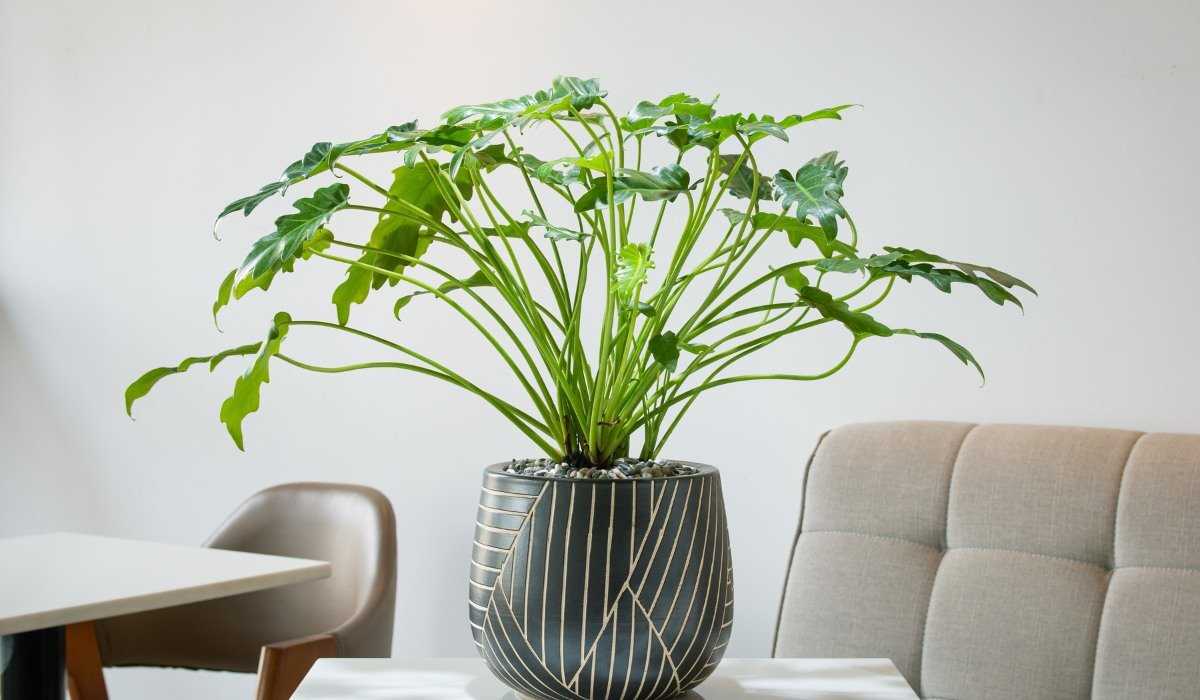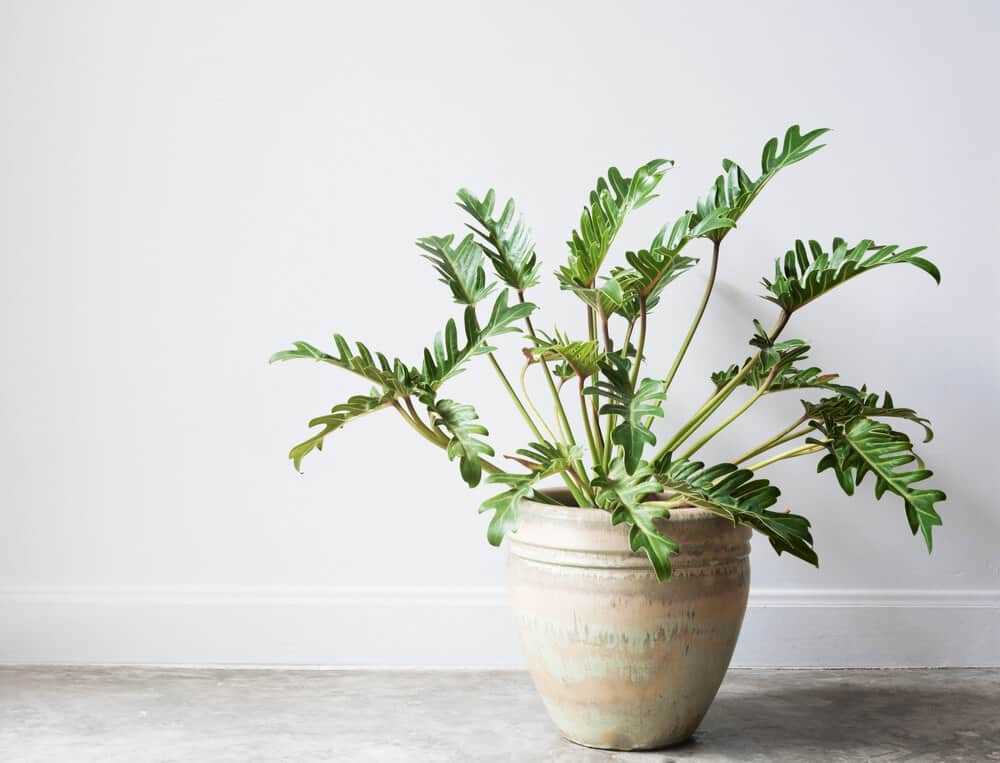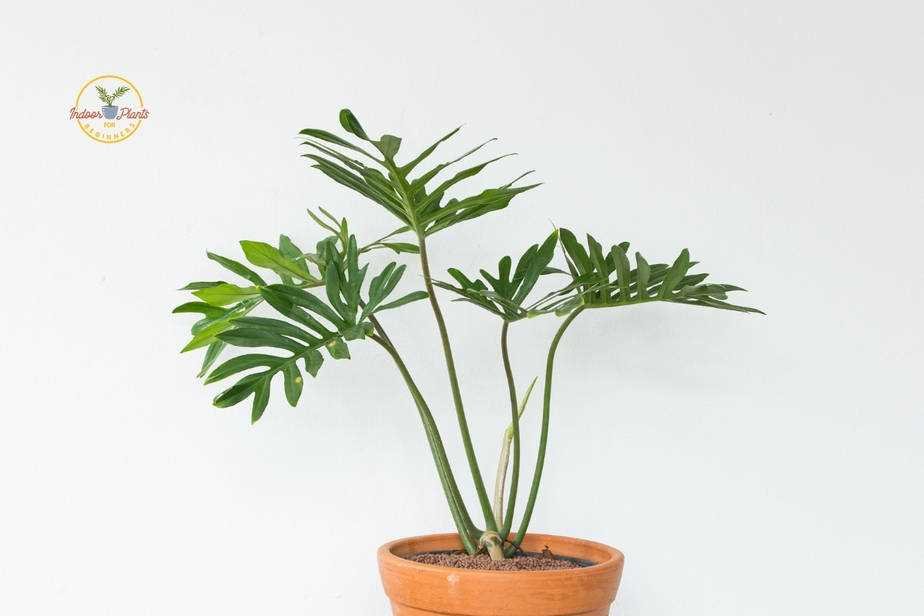Contents
Philodendron Xanadu A Guide to Growing and Caring for This Tropical Houseplant

The Philodendron Xanadu, also known as the Winterbourn Philodendron, is a popular choice among plant enthusiasts for its lush foliage and easy care requirements. This tropical houseplant is native to Brazil and belongs to the Araceae family. With its compact growth habit and attractive leaves, the Xanadu makes a stunning addition to any indoor or outdoor space.
One of the standout features of the Philodendron Xanadu is its deeply lobed, glossy green leaves. The foliage is arranged in a rosette formation, creating a dense and bushy appearance. The leaves can grow up to 18 inches long and 12 inches wide, giving the plant a full and lush look. The Xanadu also produces small, white flowers, although they are not the main attraction of this plant.
When it comes to care, the Philodendron Xanadu is relatively low-maintenance, making it an ideal choice for both beginner and experienced plant owners. This plant thrives in bright, indirect light, but can tolerate lower light conditions. It prefers well-draining soil and should be watered when the top inch of soil feels dry. Overwatering can lead to root rot, so it’s important to allow the soil to dry out between waterings.
In addition to its attractive appearance and easy care requirements, the Philodendron Xanadu also offers several health benefits. Like other plants, it helps improve indoor air quality by filtering out toxins and releasing oxygen. The Xanadu is also known for its ability to reduce stress and create a calming environment, making it a perfect addition to any home or office space.
What is Philodendron Xanadu?

Philodendron Xanadu is a tropical houseplant that belongs to the Araceae family. It is a popular choice among plant enthusiasts due to its attractive foliage and ease of care. The plant is native to Brazil and is known for its lush, dense growth habit.
The leaves of Philodendron Xanadu are deeply lobed and have a glossy, dark green color. The unique leaf shape and texture give the plant a distinctive appearance. It is often used as a decorative plant in indoor spaces, such as offices, homes, and public spaces.
One of the key features of Philodendron Xanadu is its ability to adapt to different light conditions. It can thrive in both bright, indirect light and low-light environments, making it a versatile choice for various indoor settings. However, it is important to avoid placing the plant in direct sunlight, as this can cause leaf burn.
When it comes to watering, Philodendron Xanadu prefers to be kept evenly moist. It is important to water the plant thoroughly and allow the top inch of soil to dry out before watering again. Overwatering can lead to root rot, so it is crucial to avoid waterlogged soil.
Philodendron Xanadu is a relatively low-maintenance plant and does not require frequent fertilization. However, applying a balanced houseplant fertilizer once every two to three months during the growing season can help promote healthy growth.
In terms of propagation, Philodendron Xanadu can be propagated through stem cuttings. Simply cut a section of the stem with at least two leaves and place it in a well-draining potting mix. Keep the soil moist and provide indirect light until roots develop.
Overall, Philodendron Xanadu is a beautiful and adaptable houseplant that can add a touch of tropical elegance to any indoor space. With proper care and attention, it can thrive and bring joy to plant enthusiasts for many years to come.
Overview of the plant

The Philodendron Xanadu, scientifically known as Philodendron bipinnatifidum ‘Xanadu’, is a popular tropical houseplant that belongs to the Araceae family. It is native to Brazil and is characterized by its lush, green foliage and compact growth habit.
This plant is often chosen for its attractive appearance and ease of care. Its leaves are large, glossy, and deeply lobed, giving it a unique and tropical look. The foliage is typically a bright green color, but can vary depending on the light conditions it is grown in. In lower light, the leaves may appear darker green, while in brighter light, they may take on a lighter, almost lime green hue.
Philodendron Xanadu is a relatively small plant, usually growing to a height of around 2-4 feet and spreading to a width of 3-6 feet. This compact growth habit makes it an ideal choice for smaller spaces, such as apartments or offices. It also makes a great addition to larger plant collections, as it can be easily placed alongside other plants without taking up too much space.
One of the key features of the Philodendron Xanadu is its ability to adapt to a wide range of light conditions. While it prefers bright, indirect light, it can also tolerate lower light levels. However, it is important to avoid exposing the plant to direct sunlight, as this can cause the leaves to burn.
In terms of care, the Philodendron Xanadu is a relatively low-maintenance plant. It thrives in well-draining soil and should be watered when the top inch of soil feels dry. Overwatering should be avoided, as it can lead to root rot. This plant also benefits from regular fertilization during the growing season to promote healthy growth.
Overall, the Philodendron Xanadu is a beautiful and versatile houseplant that can thrive in a variety of indoor environments. Its compact size, attractive foliage, and easy care requirements make it a popular choice among plant enthusiasts of all levels of experience.
Origin and history
Xanadu is a popular variety of the Philodendron plant, which is native to the tropical regions of Brazil. It is a hybrid plant, created by breeding two different species of Philodendron, namely Philodendron bipinnatifidum and Philodendron selloum.
The Xanadu variety was first developed in the 1980s by a Dutch botanist named Dr. Tom Croat. Dr. Croat was known for his work in hybridizing different plant species to create new varieties with unique characteristics.
The name Xanadu was inspired by the famous poem “Kubla Khan” by Samuel Taylor Coleridge, which describes a mythical place of beauty and tranquility. This name was chosen to reflect the lush and tropical appearance of the plant.
Since its creation, Xanadu has gained popularity among plant enthusiasts and is now commonly found in households and gardens around the world. Its unique foliage and easy care requirements make it a favorite choice for both beginner and experienced plant owners.
Today, Xanadu is widely recognized as a versatile and attractive houseplant, known for its ability to thrive in a variety of indoor environments. It has become a staple in tropical-themed gardens and is often used in landscaping projects to add a touch of exotic beauty.
Why choose Philodendron Xanadu?
The Philodendron Xanadu is a popular choice among houseplant enthusiasts for several reasons. Whether you are a beginner or an experienced plant parent, this tropical houseplant offers many benefits that make it a great addition to any indoor space.
- Easy to care for: One of the main reasons why people choose Philodendron Xanadu is its ease of care. This plant is known for its resilience and ability to adapt to different environments, making it a low-maintenance option for those with a busy lifestyle.
- Beautiful foliage: The Philodendron Xanadu features lush, green leaves that are deeply lobed, giving it a unique and attractive appearance. Its foliage adds a touch of tropical elegance to any room, making it a popular choice for interior decorating.
- Air purifying qualities: Like other philodendron varieties, the Xanadu is known for its air purifying qualities. It helps to remove toxins from the air, improving indoor air quality and creating a healthier living environment.
- Compact size: Another advantage of the Philodendron Xanadu is its compact size. It is a relatively small plant, making it suitable for smaller spaces such as apartments or offices. Its compact growth habit also makes it easier to manage and maintain.
- Propagation: Philodendron Xanadu is relatively easy to propagate, which means you can expand your collection or share cuttings with friends and family. This plant can be propagated through stem cuttings or by dividing the root ball.
Overall, the Philodendron Xanadu is a versatile and visually appealing houseplant that offers numerous benefits. Its ease of care, attractive foliage, air purifying qualities, compact size, and propagation potential make it an excellent choice for any plant lover.
Benefits of growing this plant
The philodendron Xanadu is a popular tropical houseplant that offers several benefits to its owners. Here are some of the key advantages of growing this plant:
- Easy to care for: The philodendron Xanadu is known for its low maintenance requirements, making it an ideal choice for beginner plant enthusiasts. It can tolerate a wide range of light conditions and is relatively forgiving when it comes to watering.
- Air purification: Like other philodendron varieties, the Xanadu has the ability to filter and purify the air. It can remove harmful toxins such as formaldehyde, benzene, and trichloroethylene, improving the overall air quality in your home.
- Indoor decoration: With its lush, green foliage and compact growth habit, the philodendron Xanadu is a beautiful addition to any indoor space. It can be used as a decorative plant in living rooms, bedrooms, offices, or even bathrooms.
- Stress reduction: Research has shown that having plants indoors can help reduce stress levels and promote a sense of well-being. The philodendron Xanadu, with its calming presence and natural beauty, can contribute to creating a peaceful and relaxing environment in your home.
- Propagation: The Xanadu is relatively easy to propagate, allowing you to expand your plant collection or share cuttings with friends and family. You can propagate it through stem cuttings or by dividing the plant at the rootball.
In conclusion, growing the philodendron Xanadu offers numerous benefits, including easy care, air purification, indoor decoration, stress reduction, and propagation opportunities. Consider adding this tropical houseplant to your collection for a touch of natural beauty and a healthier living environment.
Popular varieties
Philodendron Xanadu is a popular variety of the Philodendron genus. It is known for its lush, tropical foliage and compact growth habit. Here are some other popular varieties of Philodendron:
- Philodendron Birkin: This variety has stunning variegated leaves with white stripes. It is a relatively new cultivar and is highly sought after by plant collectors.
- Philodendron Brasil: With its vibrant green leaves and yellow variegation, this variety adds a pop of color to any indoor space. It is easy to care for and grows well in low light conditions.
- Philodendron Heartleaf: One of the most common varieties, the Heartleaf Philodendron has heart-shaped leaves that trail elegantly from hanging baskets or climb up supports. It is known for its resilience and ability to thrive in a variety of conditions.
- Philodendron Micans: This variety has velvety, deep green leaves with reddish undertones. It is a trailing plant that looks beautiful in hanging baskets or cascading down shelves.
These are just a few examples of the many stunning varieties of Philodendron available. Each variety has its own unique characteristics and care requirements, so be sure to research and choose the one that best fits your preferences and indoor environment.
Growing Conditions
Philodendron Xanadu is a tropical houseplant that requires specific growing conditions to thrive. Here are the key factors to consider when growing this plant:
- Light: Philodendron Xanadu prefers bright, indirect light. It can tolerate some low light conditions, but too much shade can cause the plant to become leggy and lose its compact shape. Avoid direct sunlight, as it can scorch the leaves.
- Temperature: This plant prefers temperatures between 65°F (18°C) and 85°F (29°C). It can tolerate slightly cooler temperatures, but avoid exposing it to cold drafts or temperatures below 55°F (13°C).
- Humidity: Philodendron Xanadu thrives in high humidity environments. It is important to provide adequate humidity for the plant, especially during dry winter months. You can increase humidity by misting the leaves or placing the plant on a tray filled with water and pebbles.
- Watering: It is important to keep the soil evenly moist for Philodendron Xanadu. Water the plant when the top inch of soil feels dry to the touch. Avoid overwatering, as it can lead to root rot. Ensure good drainage to prevent waterlogging.
- Soil: Use a well-draining potting mix that retains some moisture but doesn’t become waterlogged. A mix of peat moss, perlite, and vermiculite or a commercial potting mix for tropical plants is suitable for Philodendron Xanadu.
- Fertilizer: Feed the plant with a balanced liquid fertilizer once a month during the growing season (spring and summer). Follow the instructions on the fertilizer packaging for the correct dosage.
- Pruning: Regular pruning helps to maintain the compact shape of Philodendron Xanadu and encourages new growth. Remove any yellow or dead leaves and trim back overgrown stems to promote bushier growth.
- Propagation: Philodendron Xanadu can be propagated through stem cuttings. Take a cutting with at least two nodes and place it in water or moist soil. Keep the cutting in a warm and humid environment until roots develop.
By providing the right growing conditions, you can enjoy a lush and healthy Philodendron Xanadu in your home or garden.
Lighting
The Philodendron Xanadu is a tropical houseplant that thrives in bright, indirect light. It can tolerate some shade, but too much darkness can cause the leaves to become pale and lose their vibrant green color.
When choosing a spot for your Xanadu, consider placing it near a window that receives bright, filtered light. Avoid placing it in direct sunlight, as this can scorch the leaves. If you don’t have a suitable window, you can also use artificial lighting, such as fluorescent or LED grow lights, to provide the necessary light for your Xanadu.
It’s important to note that the lighting needs of the Xanadu can vary depending on the climate and season. In general, it will require more light during the winter months when the days are shorter and the sunlight is less intense. On the other hand, during the summer months, it may need some protection from direct sunlight to prevent leaf burn.
If you notice that your Xanadu is not receiving enough light, you may see its leaves become smaller and its growth slow down. On the other hand, if it is exposed to too much direct sunlight, the leaves may turn yellow or develop brown spots. Adjust the lighting accordingly to ensure the optimal growth and health of your Xanadu.
In summary, the Philodendron Xanadu requires bright, indirect light to thrive. Place it near a window with filtered light or use artificial lighting if necessary. Monitor the plant’s response to the lighting conditions and make adjustments as needed to ensure its health and vitality.
Indoor lighting requirements
The Philodendron Xanadu is a tropical houseplant that requires bright, indirect light to thrive. It is important to place your Philodendron Xanadu in a location that receives bright, filtered light throughout the day.
Avoid placing your plant in direct sunlight, as this can scorch the leaves and cause them to turn yellow or brown. If you notice that your plant’s leaves are starting to yellow, it may be a sign that it is receiving too much direct sunlight. Move your plant to a location with more shade to prevent further damage.
If you do not have a location in your home that receives sufficient natural light, you can supplement with artificial lighting. Place your Philodendron Xanadu near a window or use a grow light to provide the necessary light for growth.
When using artificial lighting, it is important to mimic the natural light cycle. Aim to provide your plant with 12-16 hours of light per day, followed by 8-12 hours of darkness. This will help to promote healthy growth and prevent your plant from becoming stressed.
Keep in mind that the lighting requirements of the Philodendron Xanadu may vary depending on the specific conditions in your home. It is always best to monitor your plant and adjust its lighting accordingly to ensure optimal growth and health.
Video:Philodendron Xanadu A Guide to Growing and Caring for This Tropical Houseplant
Xanadu Philodendron ‘Winterbourn’ | FastGrowingTrees.com
Hello, I am Beverly J. Sanders, the voice behind the diverse articles you come across on styves.co.za. My passion lies in exploring the nuances of home improvement and sharing tips that can help you transform your living space into a haven of comfort and style. From the latest trends in home decor to practical cleaning advice, I cover a broad spectrum of topics to cater to a wide variety of interests.
In my recent works, I have delved into the advantages of incorporating a horizontal Murphy bed into your home to save space without compromising on design and functionality. I also explored the benefits of having a free-standing electric fireplace that not only adds warmth to your home but also brings a sleek and modern design to any living space. My articles are a rich resource, offering insights into different products and home improvement strategies that can enhance the quality of your life.
I believe in the power of details; a belief that reflects in my comprehensive guides where I discuss even the overlooked aspects of home decor, such as the impact of baseboard trim in enhancing the overall look and feel of your home. I am constantly on the lookout for innovative solutions and products that can add value to your home and life.
Join me in my exploration as I continue to bring you the latest trends, tips, and insights in the home improvement world. Let’s create a home that is not just a place to live, but a reflection of style and personality.